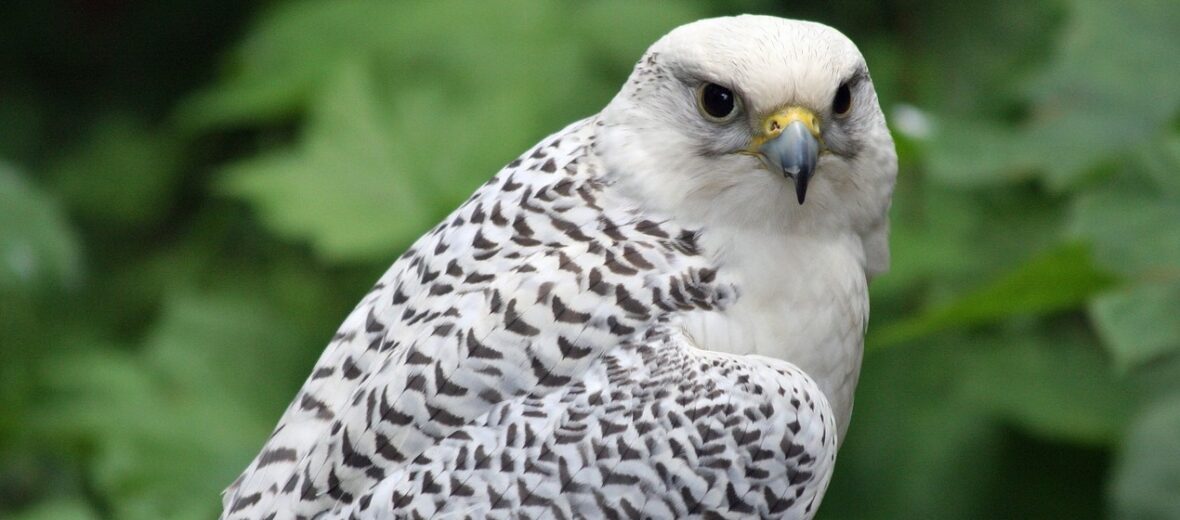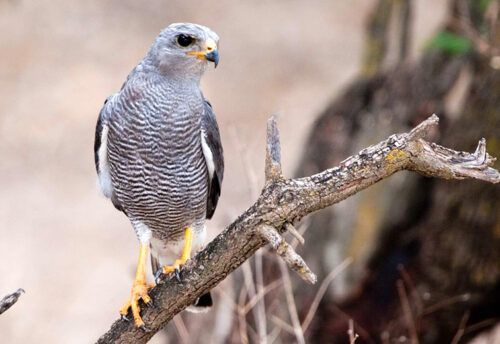
Found in Finland, Greenland, Iceland, North America, Norway, and Russia, the gyrfalcon is a powerful falcon indeed and the largest known falcon in the world! They like habitats with tundra, taiga, and rocky outcrops & cliffs. Due to currently stable numbers and distribution, these falcons are listed as Least Concern by the IUCN. They are still globally affected by pollution, climate change, and human disturbance.
First the Stats…
Scientific name: Falco rusticolus
Weight: Up to 4.6 lbs.
Length: Up to 2 feet
Wingspan: Up to 47 inches
Lifespan: Up to 20 years
Now on to the Facts!
1.) The gyrfalcon is solitary. Only coming together to mate.
2.) These raptors are diurnal (active during the day).
3.) While mostly quiet, they can produce “kiak kiak kiak”, “gik-gik”, and “giiiii” calls.
4.) A group of falcons is called an eyrie, bazaar, ringing, stooping up, or a tower.
5.) The name gyrfalcon is believed to be a hybrid of the Old High German word gir, which translates to vulture, and the Latin falx, which is a farm tool with a curved blade. Referencing the bird’s curved talons.
But wait, there’s more on the gyrfalcon!
6.) Being among the longest used raptor nests ever recorded, one nest had guano deposits dating back as far as 2,740 years! Hey, if it aint broke, don’t fix it.
7.) They typically prey on ptarmigan and waterfowl. But they will also take lemmings, voles, ground squirrels, hares, bats, passerine (song) birds, and smaller raptors.
Did you know…?
These birds of prey are so fierce that they have even been known to dive bomb bears that come close to their nesting site!
8.) These raptors are monogamous (mate for life).
9.) Gyrfalcons are sexually dimorphic in that, like other raptors, the female is notably larger than the male.
10.) Females lay up to 5 eggs that hatch in around 35 days.
But wait, there’s still more on the gyrfalcon!
11.) Gyrfalcons like to bathe in melting ice water. That’ll wake you up in the morning.
Did you know…?
The gyrfalcon can fly at speeds of up to 70 mph!
12.) Their only known predators are golden eagles and ravens (which pick off eggs in unguarded nests).
13.) The gyrfalcon spends most of it’s winter out at sea, around sea ice, hunting water fowl.
14.) Due to the large decline in ptarmigans, gyrfalcon populations are also now starting to decline. This is due to the fact that they rely heavily on ptarmigans for food.
Now a Short Gyrfalcon Video!
Be sure to share & comment below! Also, check out the Critter Science YouTube channel. Videos added frequently!
Want to suggest a critter for me to write about? Let me know here.



